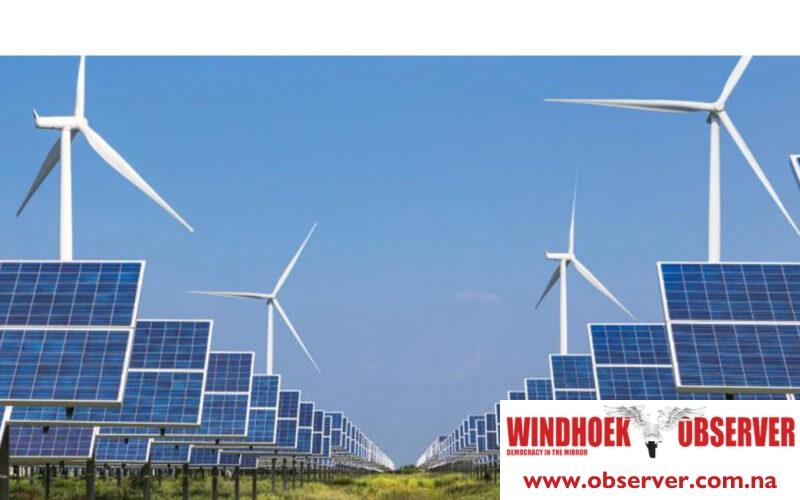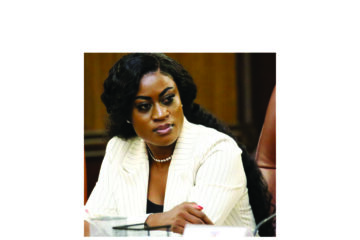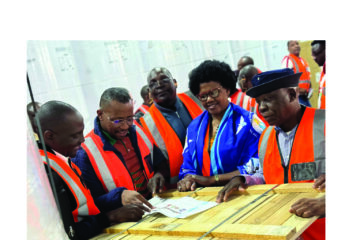Niël Terblanché
The Namibian Chamber of Environment (NCE) has issued a strong warning against a proposed “green” hydrogen project that threatens to transform one of Namibia’s most significant biodiversity hotspots into an industrial site.
Launched on International Biodiversity Day, the position paper underscores the severe environmental consequences of the project, which aims to produce hydrogen using renewable energy but at the cost of biodiversity loss.
Chris Brown, CEO of the NCE, argued that hydrogen production at the expense of biodiversity should be termed “red hydrogen” rather than “green hydrogen.”
“The term ‘green hydrogen’ refers to hydrogen produced using 100% renewable energy like wind and solar power. However, the environmental impacts of the large-scale infrastructure required for such projects are significant and concerning,” Brown said.
The proposal to produce hydrogen involves constructing vast arrays of wind turbines and solar panels in the Tsau //Khaeb (formerly Sperrgebiet) National Park.
This area is a near-pristine environment and one of the few global biodiversity hotspots in arid regions, shared between Namibia and South Africa.
The park, which has been largely untouched for over a century, covers 21,800 square kilometres and hosts an exceptional variety of plant species, including many that are endemic and not found anywhere else on Earth.
The NCE’s position paper outlines the various environmental impacts of the project, including habitat destruction, bird and bat fatalities due to turbine blades, and long-term damage from infrastructure development such as roads and power lines.
The park’s unique plant species, which thrive in full-sun desert conditions, are particularly vulnerable to the shading effects of solar panels.
One of the most alarming aspects of the proposed development is its location within Tsau //Khaeb National Park. This park, Namibia’s most biodiverse, contains about 25% of the country’s plant species within only 3% of its land area.
According to Brown, any development in this sensitive environment could result in irreversible damage, including the potential extinction of species that have not yet been documented.
For this project, the Namibian government has allocated a 4 000-square-kilometer area within the park to Hyphen Hydrogen Energy, which also includes plans for desalination plants and infrastructure to convert hydrogen into ammonia.
The NCE’s position paper warns that such developments will transform the area into a light industrial zone, causing significant harm to both terrestrial and marine ecosystems.
The proposed site near Lüderitz, an Important Bird Area, is particularly troubling due to its critical role as a breeding and roosting ground for endangered seabirds.
In a further twist, the NCE pointed out the irony of Germany’s involvement.
The German government, through its development bank KfW, funded a park management plan that recommended low-impact tourism as the only suitable form of development for Tsau //Khaeb.
Now, Germany is supporting the hydrogen project, which contradicts the conservation efforts it previously endorsed.
Brown questioned whether German citizens would support a similar project if it were proposed in their own country, given that it involves sacrificing a pristine natural area for energy production.
The NCE is advocating for a thorough, transparent strategic environmental and social assessment of the hydrogen project, considering the full costs and benefits at a national level rather than focusing on a pre-selected region.
The chamber believes that other parts of Namibia, with lower biodiversity values, would be more suitable for such developments and would offer a higher benefit-to-cost ratio.
The NCE’s stance reflects its commitment to sustainable development that maximises economic benefits while minimising environmental costs, aligning with Namibia’s constitution and National Development Plans.
The chamber’s 77 member organisations are urging Namibians and the international community to oppose the project, highlighting the potential long-term damage to one of the world’s most important national parks.
The Tsau //Khaeb National Park represents a critical piece of Namibia’s natural heritage, and its preservation is essential not only for biodiversity but also for sustainable tourism and future generations.
The NCE called for immediate action to protect this invaluable ecosystem from the detrimental impacts of what it terms the “red hydrogen” project.




